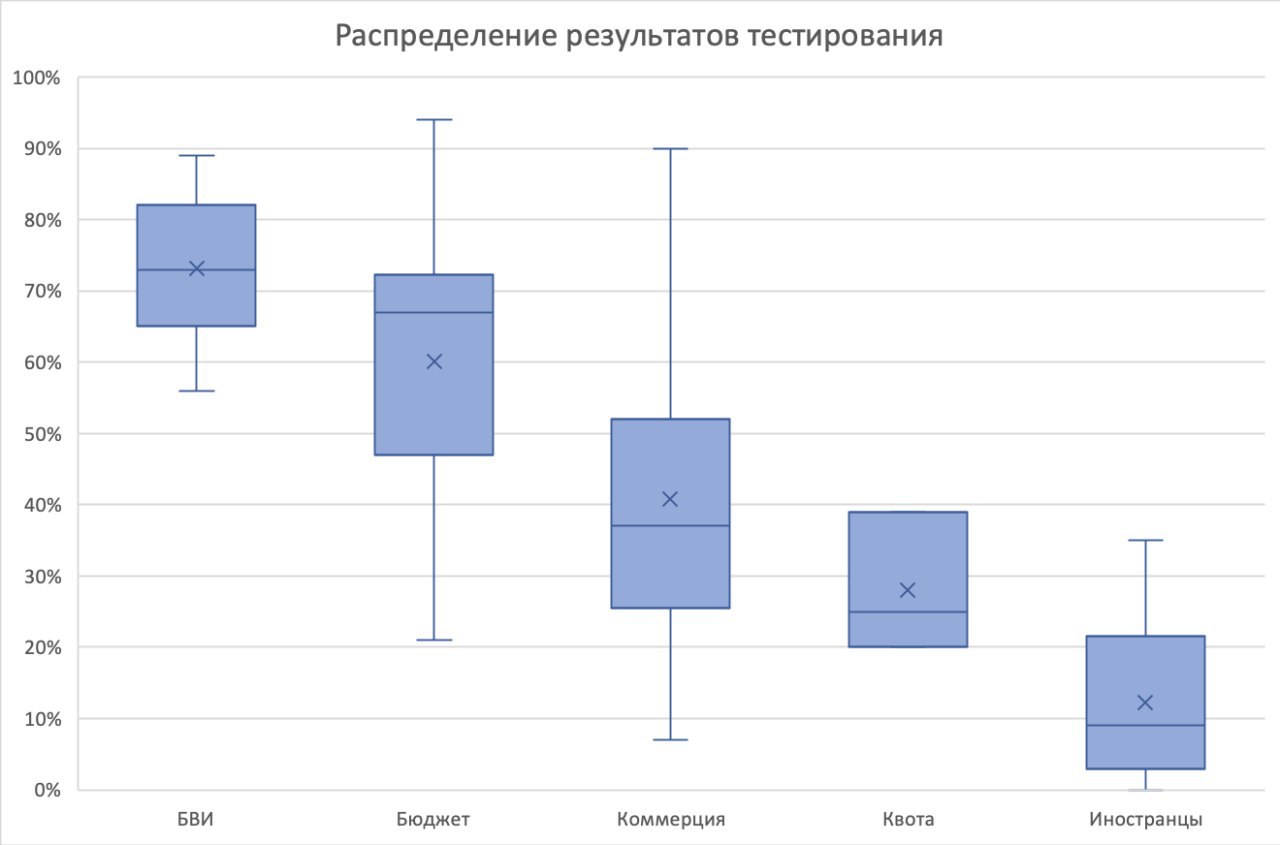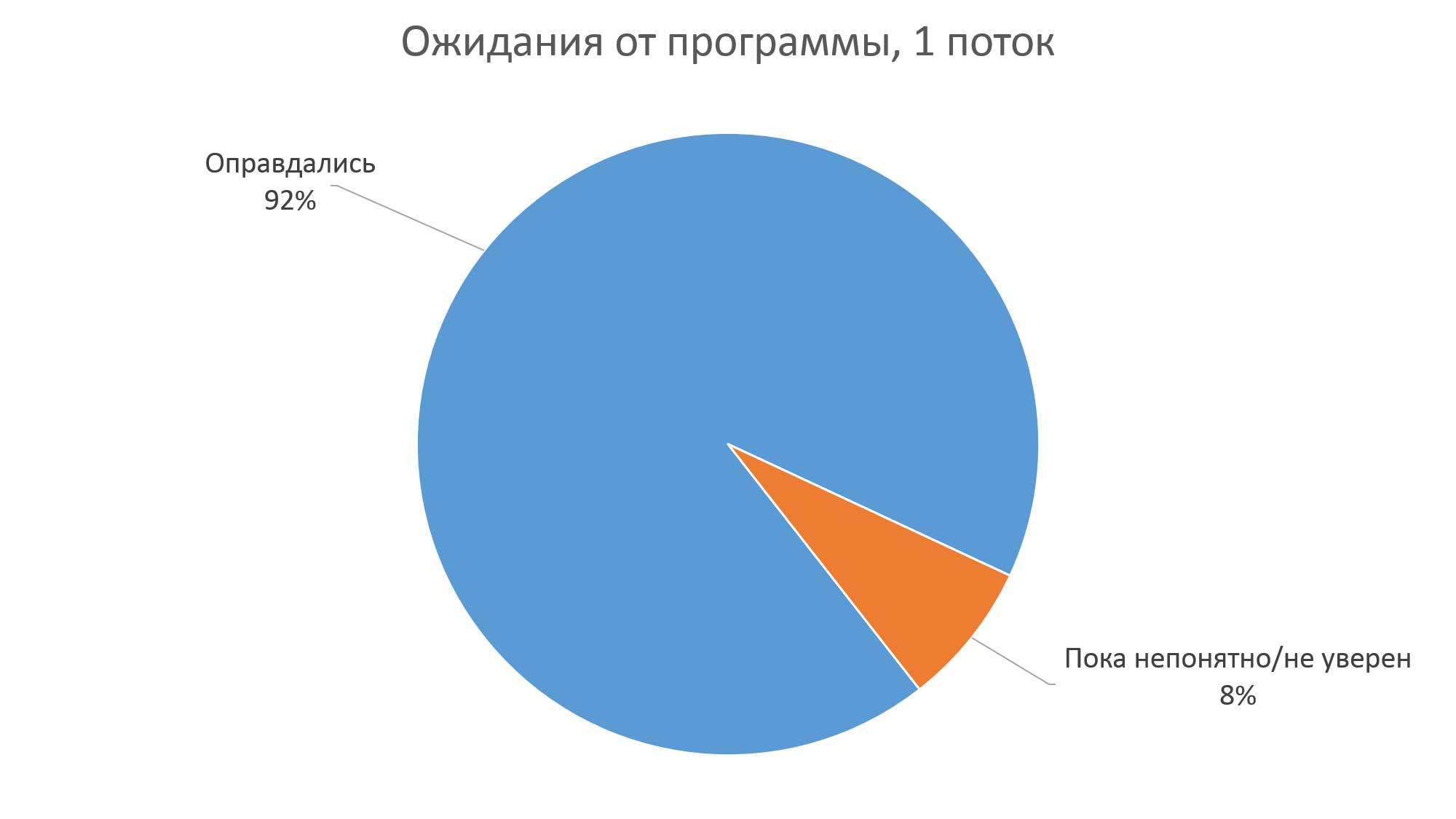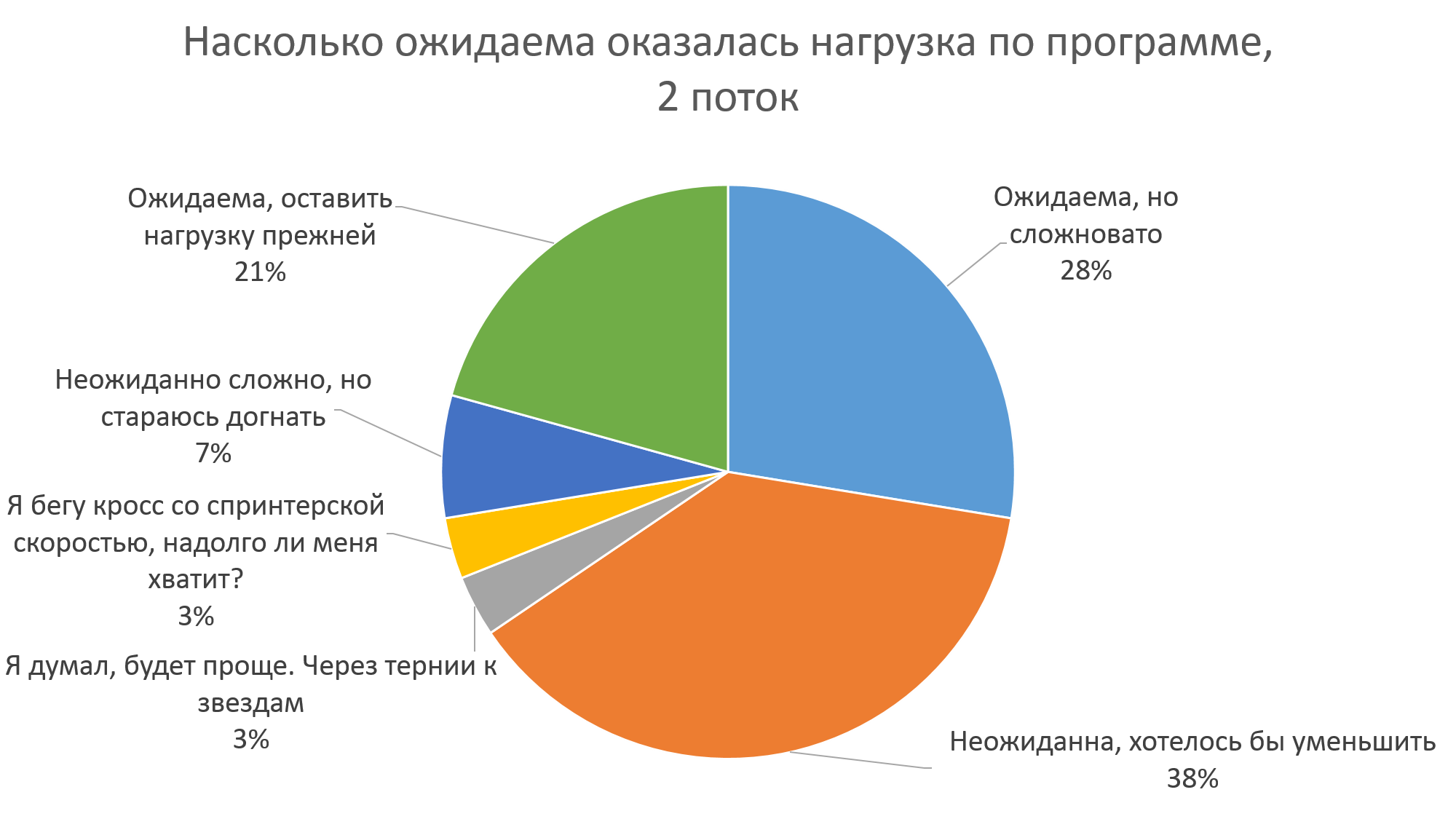
Who came to us
The acceptance numbers for the program in 2019 amounted to 40 places. In these places we scored 11 winners of the first level olympiads, three people in quota and 26 people in USE. The passing score on the basis of budgetary admission was 296 points out of 310 possible (300 for the exam and 10 for individual achievements). In addition, 37 people came to us as part of a commercial reception. The minimum exam score for this category of applicants for the program was 242 points. Finally, 13 people entered the reception of foreigners from other CIS countries. In total, we received 90 first-year students at the entrance.
90 people for us - this is a rather large number compared to the number of students with whom we are used to working while in SPbAU - there the maximum admission did not exceed 40 people. In addition, since SPbAU was only accepted to budget places, the composition of students who have now come to our program has become more heterogeneous.
To understand who we have to deal with, on September 1, we conducted a fairly serious test of freshmen. The guys had three separate entrance tests: in mathematics, algorithms and programming. Each test lasted an hour and a half. The results were quite expected (see the figure): on average, the Olympiad wrote the test best, then the state employees, then the ones accepted for commerce, then the quotas, and worst of all the foreigners.

How we solved the problem of different levels of freshmen training
The results of the input testing also prompted us a rather obvious solution - to divide all the applicants into two streams of 45 people each: conditionally strong and conditionally weak. Conditionally - since we evaluated on the input testing not the intellectual level of applicants, but the amount of input knowledge. It depends more likely not on the person, but on where he came to us from and what input knowledge he possessed.
We could not and did not want to make different programs for these two streams. The main task of the division was to, firstly, obtain a more or less homogeneous composition of students in one lecture room, and secondly, more flexibly control the pace and degree of detail of the material presented. In addition, each stream was divided into three groups for practical training. Despite the same topics, the level of tasks and their number differed from group to group. The first group was offered the largest and most complex set of tasks, the sixth - the shortest and simplest.
Actually, both the first stream and the three groups into which we divided it for practice, approximately corresponded to the level of students whom we had all the previous years recruited for a similar program at SPbAU. The level of the second stream was quite different from it. We emphasize once again: not in terms of the intellectual abilities of students, but in terms of the level of initial training. So, some students never really wrote in any programming language, some before that completely did not know the algorithms. And, despite the fact that each of the subjects of the first semester began with the very basics, the pace of the classes and the level of tasks in practice nevertheless assumed a rather good level of input knowledge. Honestly, this would have ended for most students of the second stream, because to master our program from scratch is almost impossible even for strong students. And here both us and our freshmen were literally saved by our same senior students.
Back in August, we found fourth-year students who were ready to help us with the first year and become curators of subgroups. As a result, each group of the first year was assigned a curator, plus a certain number of older students appeared who were ready to help us with practices, answer students' questions, conduct consultations and additional classes. In addition, we asked them to monitor the general mood of freshmen: to note those students who had something gone wrong, to morally support those who did not succeed.
All these forms of support turned out to be extremely effective and extremely demanded, especially students of the second stream. The curators talked to them every day, both personally and in Telegram chats. As a rule, we learned about specific problems associated with a particular student, almost on the same day when these problems began. And they tried in one way or another to solve these problems, arranging personal and / or collective consultations, conducting additional classes, simply meeting with these students. And it really helped - most of the first-year students more or less successfully passed through exams and tests of the first module. To date, the losses amounted to 8 people, and half of them were expelled during the first two weeks, finding out for themselves that they simply made a mistake with the program.
What students say after two months of study
Two weeks ago, we conducted a survey among freshmen. They asked, as usual, about the quality of teaching certain subjects, and, more importantly, about the general impressions of the program. The reviews first of all showed that the expectations of entering the program were met by the absolute majority.


The response to the load was expected. One of the most common answers was "I understood (a) that it would be difficult, but did not think (a) that it was so." Some more of them: “I haven’t gone out since September 1”, “The load is not designed for ordinary people”, “I’m running cross-country with sprint speed, how long will I have enough?”


The guys have almost no time left for anything other than studying. The most popular type of extracurricular activity was a dream. At the same time, to the question “Do you think that the load should be reduced”, most of them nevertheless answered that this should not be done: “Honestly, I can’t imagine how to reduce the load, since everything is important”, “The load is unexpected, but probably it should be so. ”
Students of the first stream rate the general atmosphere at 4.64 on a five-point scale, and the second stream at 4.07. General comments: “Everything is very interesting and on business”, “Really strong direction, great teachers and a lot of work”, “A lot of new, useful, applicable. Difficult and interesting. The teachers are cool. And I have not died yet. ”
Summing up, we can say that on the whole we seem to have overcome new challenges: the heterogeneity of the flow and the increased number of students. At the same time, it was possible not to lose either in quality or in intensity of the program. Now it remains to wait for the results of the first session and compare our expectations with the real results of students.